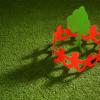
The way we do science has come a long way—from having only experts work on scientific projects, to where many projects now also include members of the public as participants. This change is thanks to citizen science, which creates opportunities for science to be taken to the next level.
Designing, conducting, and evaluating science has always been a complicated process. In addition, the entry requirements for participation have traditionally made scientific endeavors rather exclusive, often requiring the completion of multiple specialized qualifications to acquire the requisite knowledge and skill sets. The development of the field of citizen science over the past few decades is however changing the way we do science by opening participation up to non-experts. Examples of successful citizen science projects abound, pointing to an eagerness from both scientists and the public to share in knowledge creation. The development of the field is also giving rise to new ways of collecting and processing rich data sets that would previously have been out of reach.
IIASA hosts a global network of citizen science initiatives, practitioners, and researchers known as the Citizen Science Global Partnership (CSGP). In 2022, the CSGP held its first general assembly at IIASA with its founding partners at the University of Geneva, the University of Natural Resources and Life Sciences, Vienna, and other citizen science associations and networks from around the world such as the European Citizen Science Association, the Australian Citizen Science Association, the US-based Association for Advancing Participatory Sciences, CitizenScience.Asia, the Citizen Science Africa Association, and the Ibero-American Network of Participatory Science, among many others.
Fully engaging everyone in science has the potential to bring about societal change—so much so that it can help us to achieve the ambitions of the Sustainable Development Goals (SDGs). In a study published by IIASA researcher Dilek Fraisl and colleagues in 2020, which was also recently mentioned in a Nature editorial, the authors found that citizen science data are already contributing, or can contribute to, monitoring 33% of the SDG indicators. In the said editorial, Nature also highlighted the importance of fulfilling the SDGs by the 2030 deadline, and that with the involvement of citizen scientists, so much more could be done to get the world to where it needs to be. However, they identified one current challenge: transforming individual good practices into larger-scale efforts worldwide as humankind races against time.
Since the study was published, Fraisl says that the interest in citizen science among the official statistics community has grown significantly.
“Just recently, the UN Statistics Division launched the Citizen Data Collaborative—a platform for collaboration and knowledge sharing to leverage the potential of citizen data initiatives for the SDGs. Today, an increasing number of National Statistical Offices and UN agencies are working with or exploring the potential of citizen science approaches in their respective fields,” notes Fraisl, who is associated with the Novel Data Ecosystems for Sustainability Research Group in the IIASA Advancing Systems Analysis Program.
Many of the institute’s researchers, like Fraisl, are contributing to the development of citizen science globally. For example, through working with IIASA researchers, Ghana recently became the first country to use citizen science data to monitor and report on the SDG indicator related to marine plastic litter. The results, in turn, aided in formulating an integrated coastal and marine management policy for Ghana. The project helped bridge local- and community-level citizen science initiatives and networks with national and global monitoring processes.
Additionally, the World Health Organization (WHO) also collaborated with IIASA scientists to explore the potential of citizen science data for monitoring health- and wellbeing-related SDG indicators and the WHO’s Triple Billion Targets, which aims to have one billion people benefit from universal health coverage, another billion protected from health emergencies, and another billion enjoying better health and wellbeing.
Apart from these initiatives, the Curating, Replicating, Orchestrating, and Propagating Citizen Science throughout Europe—or the CROPS Project for short—was launched by IIASA and partners to mainstream citizen science methodologies and to support local citizen science efforts as they expand throughout Europe and beyond. With CROPS, the EU Research & Innovation system will be able to adapt to the changing needs of citizen science research as it moves from a small-scale to a large-scale European endeavor, ultimately adopting a modern, open-science approach.
Citizen science is arguably a game changer in the conduct of scientific projects. Apart from the opportunities it creates for data collection and co-creation, the practice of citizen science has the added benefit of improving people’s understanding and appreciation of what were once foreign concepts and ideas.
While there are hurdles to getting everyone involved, the fact that there is global motivation to further participatory efforts in science is already a step in the right direction. We should not see science as static—it is a living, always evolving human endeavor. It is perseverance personified, and we should strive for it to remain malleable to become better, more inclusive, and more empowering.
Note: This article gives the views of the author, and not the position of the IIASA blog, nor of the International Institute for Applied Systems Analysis.